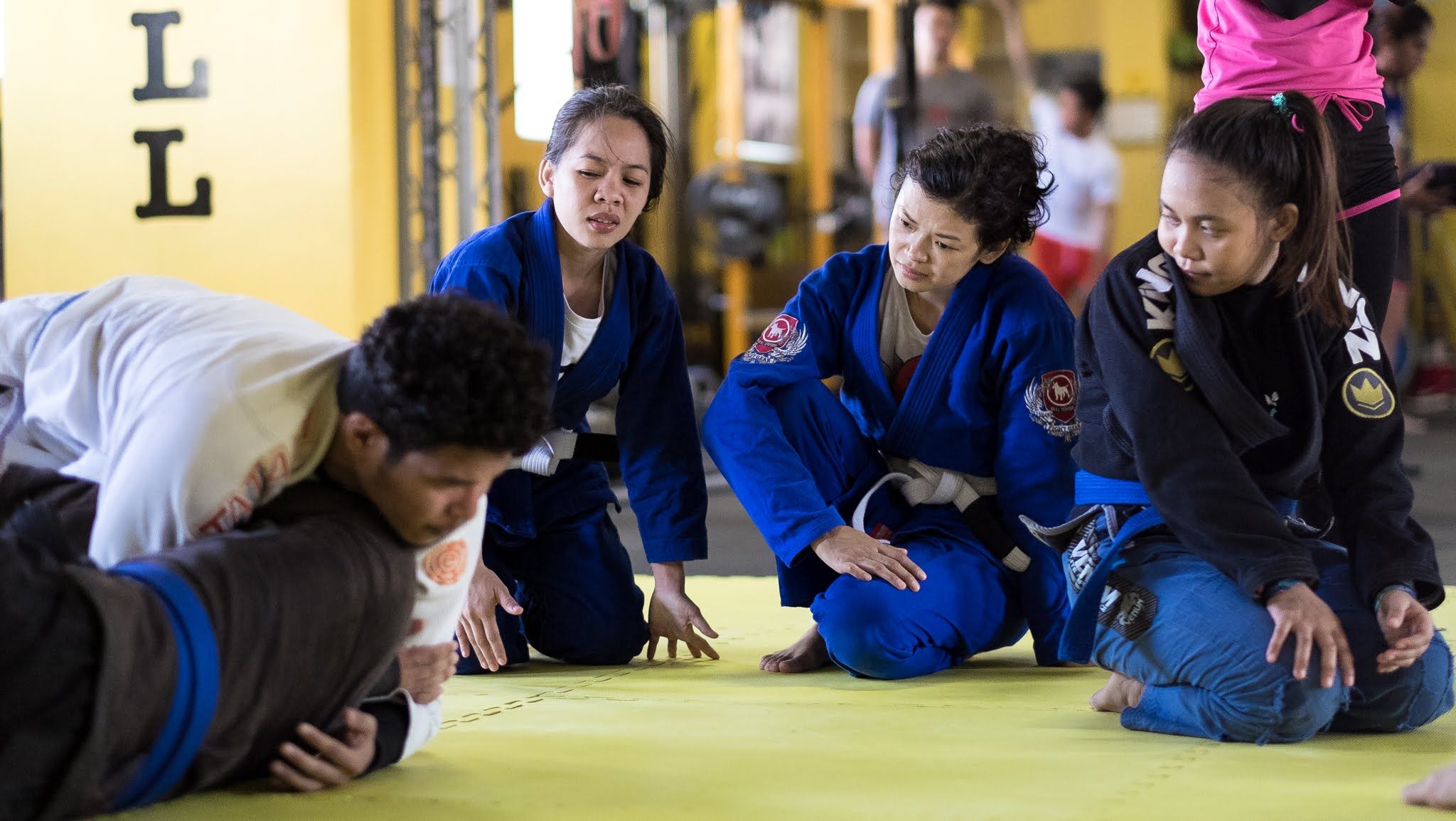The traditional way of teaching Brazilian Jiujitsu is to string a bunch of techniques together without much emphasis on the he fundamental concepts that govern these techniques. Teachers such as John Danaher have started to approach teaching more conceptually. He has stated that he is starting to teach via heuristics or rules of thumb. Heuristics can be seen as part of a larger group of mental models.

Photo by Evee Ruiz
According to Farnam Street blog mental models are:
"...massive, but finite amount of fundamental, unchanging knowledge that can be used in evaluating the infinite number of unique scenarios which show up in the real world."
These mental models of jiujitsu inform the decisions when engaging in training and sparring or in competition. A good collection, seen as a latticework, of these models can be helpful in accelerating learning.
1. Position over Submission
This might be the first mental model most of us learn in jiujitsu. Emphasizing positional dominance before starting any attack on a submission. The IBJJF ruleset emphasizes this model.
2. Inside position = dominance
Underhooks, inside grips, open guard systems such as ashi garami or single x, butterfly and x-guard all rely on the inside position to achieve control over the opponent. Removing an opponent's inside position often leads to a better position.
3. Danaher's Four Mechanical Pillars
John Danaher explains it in his facebook page:
The four mechanical pillars upon which my approach to jiu jitsu is Based: A huge part of my approach to jiu jitsu is based around what I believe are the four most important mechanical underpinnings of the sport. These are
1 - The principle of LEVER AND FULCRUM
2 - The principle of the WEDGE (inclined plane)
3 - The principle of DIRECTIONALITY OF FORCE
4 - The principle of KUZUSHI (off balancing)
Through the lens of these four mechanical principles I see most of the sport of jiu jitsu. Everything I teach, every question I ask, and every answer I offer, will make reference to at least one of these principles. Lever and fulcrum are widely talked about. They are force multipliers that can make the weakest man strong. Wedges are used to immobilize and inhibit or direct movement (among other things) - think of a humble little door stop that can hold any door open even in a hurricane. With regards your own force, a fundamental measure of its efficiency and effect will be the degree to which you apply the force in the appropriate direction. So often we apply large amounts of force in the wrong directions, when a much smaller force in the right direction would have garnered much better results. Kuzushi (off balancing) refers to our capacity to move an objects center of gravity beyond its base of support and destabilize it to create openings for attack. Kano wisely saw the value of this in standing positions. One of my biggest goals is to extend its use into bottom position ground grappling where it can play a tremendous role in advancing our bottom game. I teach jiu jitsu as a primarily mechanical enterprise, backed up by biomechanical and tactical elements. In the future I will talk more about these critical notions. Show me any move in the sport and I will show you how at least three of these four concepts are involved in its operation. Once you learn to observe the sport through these concepts you will see a very different sport indeed. Three of these four mechanical underpinnings have been widely discussed for generations - but the principle of the WEDGE has never been emphasized in jiu jitsu. One of my primary goals as a teacher is to change this.
4. Invisible Jiujitsu
Rickson's invisible jiujitsu states that there are techniques that need be felt to be understood. Jiujitsu is a physical activity and that words often lack a quality that can only be expressed through physical sensations.
5. Drill to Win/Drillers are Killers
Drilling is one of the most important component in training because repetition creates better muscle memory, thus creating faster responses to scenarios. Within this model there are arguments about what type of drills are the most effective. Positional drills vs situational drills. Timed vs counting. Whatever the case, for the vast majority of practitioners, drilling is fastest way to achieve mastery of these position.
These are just the basic mental models in BJJ I've identified. Most likely this will be updated and edited. If you have mental models you'd like to add please feel free to add comment below.